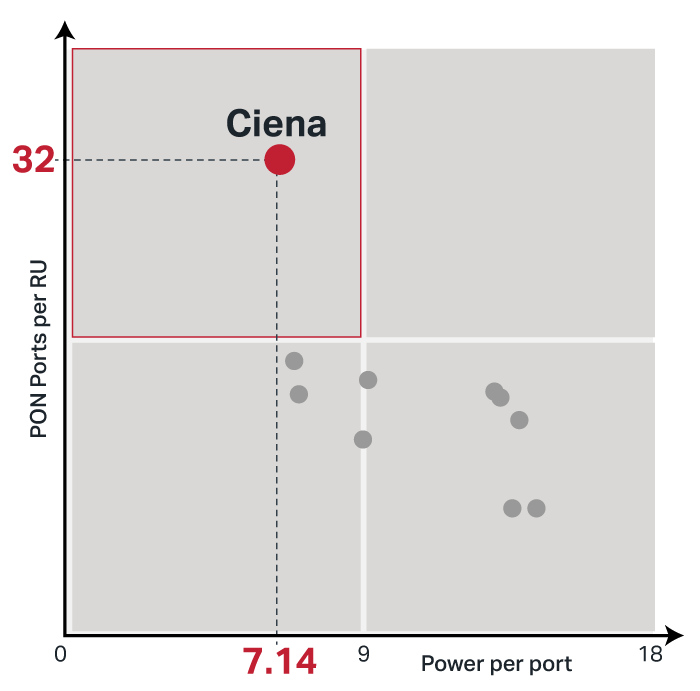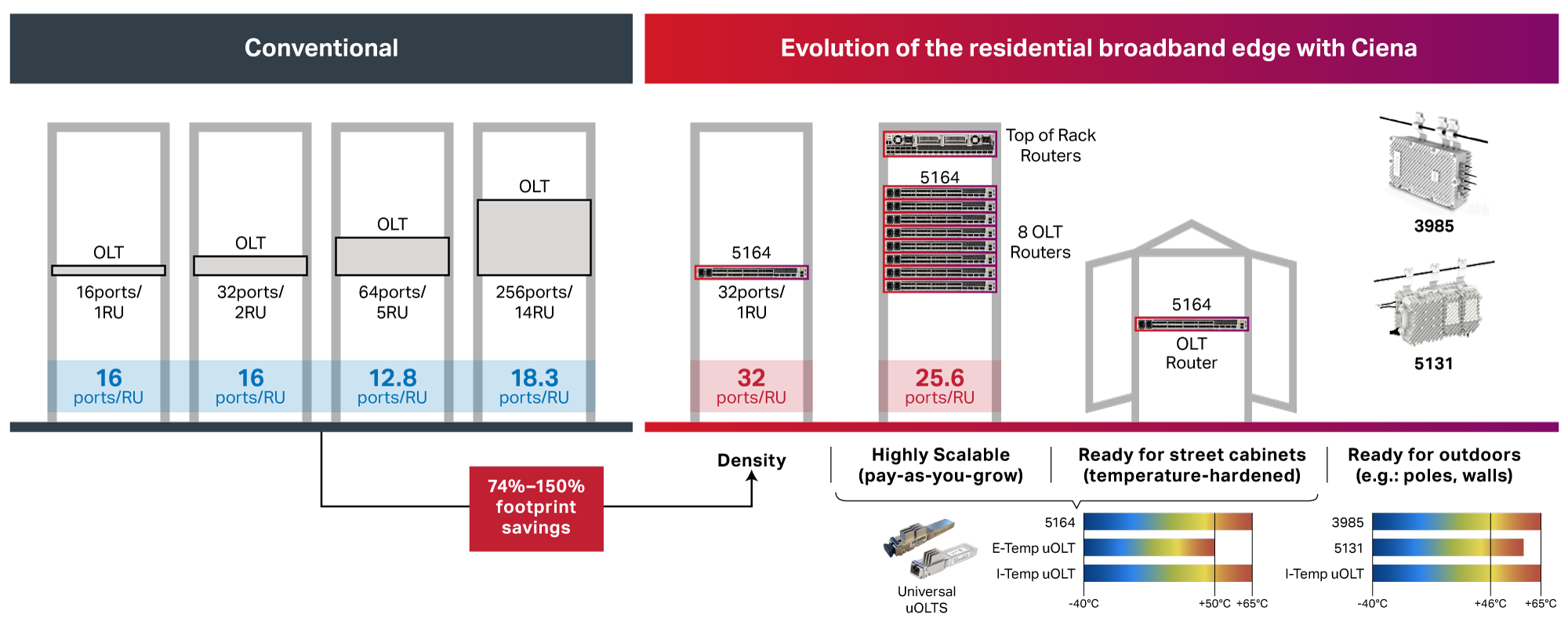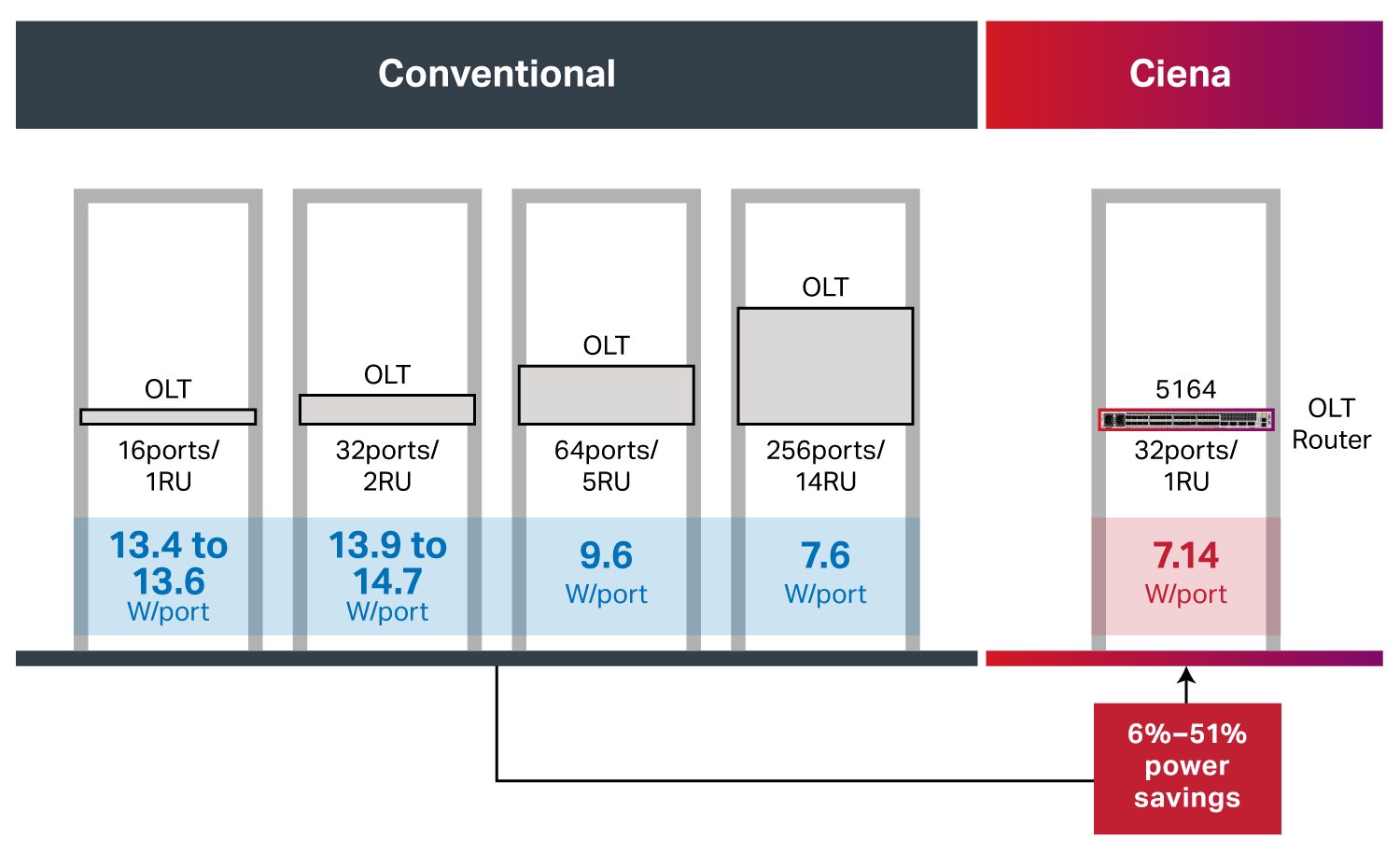How to build a sustainable, next-generation broadband network with Ciena
More and more people are playing, working, and studying from home. In addition, new behavioural trends such as digital nomading and ‘workcations’ are changing network traffic patterns and, in some cases, pushing the network edge to ever more remote locations.
The question is: How can operators drive their service performance and network monetisation, support unserved and underserved communities, deliver amazing Quality of Experience (QoE) to customers, and meet sustainability goals?
At Ciena, we address this question in a convergent way, supported by a complete broadband solution of network systems, software, and services that delivers unprecedented efficiency and sustainability for everyone.
Next-generation broadband as an economic and social enabler
Next-generation broadband should underpin state and local government objectives. State authorities around the world are very focused on reaping the social benefits of fast broadband connectivity, funded by large public investments, and are creating policies that extend access to traditionally underserved and unserved regions.
Local authorities share the same objectives and are—in all cases— keen to minimise deployment costs and complexity, especially for the network construction phase.
To address these issues, operators need to follow an efficient network-building approach that lowers power consumption, requires less physical space to deploy network edge infrastructure, reduces the construction phase duration, and accelerates service activations.
Introducing Ciena’s sustainable, next-generation broadband solution
Ciena aims to be carbon neutral by the end of 2023. As we continue to make our own operations greener, we’ve put sustainability at the very heart of our technology roadmap as well, helping our customers meet their cost and long-term power-saving targets.
With Ciena, operators can deliver symmetrical 10G PON performance at the edge using a single fibre with minimal environmental impact. This performance is achieved with reductions in power consumption of up to 63 percent and reductions in footprint when compared with chassis-based solutions of up to 67 percent. A density of up to 2,048 subscribers per rack unit is also possible with OLT and routing and coherent optics capabilities converged into a single device.
These kinds of features enable operators to go beyond traditional approaches. Combined with weather hardened capabilities, operators can redefine traditional building and turnkey stations. The edge can also be hosted in street cabinets and even in outdoor premises, such as on poles.
In addition to power savings and a reduced footprint, fewer truck rolls are required, speeding up network deployments and service provisioning times. When it comes to operations, an automation strategy is paramount to meeting customer experience expectations while also optimising network resources and logistics, thus also reducing service interruptions and technician displacements.
In this respect, Ciena’s Navigator Network Control Suite TM (NCS) domain controller and Blue Planet® automation software provide a comprehensive set of automation capabilities to bring operations to the next level and reduce truck rolls during network deployments—thereby reducing fuel costs and emissions and increasing overall sustainability.
Delivering sustainability benefits across all network layers
To improve people’s lives with next-generation broadband, networks must reach underserved and unserved areas, which are typically in rural locations. Operators can connect remote regions hundreds of kilometres away from the nearest town using extremely compact and powerful Ciena devices that use market-leading WaveLogic™ 5 coherent optics, advanced IP routing, and pluggable-based 10G PON uOLT at the edge, with e-Temp or i-Temp options. This solution reduces power consumption by up to three-fold and requires less space than traditional, chassis-based solutions.
Ciena’s WaveLogic 5 is a key building block for network sustainability. This technology has helped Ciena, and our customers avoid more than 4.5 million metric tons of C02 emissions between 2012 and 2021 based on a three-fold increase in fibre capacity, an 80 percent reduction in power consumption per bit transported, and an 85 percent reduction in the network equipment footprint.
More performance for less space and energy consumption with Ciena
Footprint reduction is especially important at the edge. This is because new applications require computing and storage resources closer to customers, adding challenges to space management at the border. A thin but powerful access network is key for supporting new traffic patterns, while freeing up space for other co-located technologies. Likewise, energy optimisation is crucial from an economic and environmental point of view.
With Ciena, operators can achieve both of these benefits.

Power vs. space quadrant. Ciena’s leadership in space and power optimization
(Source: Ciena internal study)
Ciena’s OLT router reduces the network footprint between 74 percent and 150 percent compared to other options in the market. In addition to the inherent space-saving in central offices, the OLT can also be installed closer to customers—for example, in street cabinets. The uOLT architecture also allows OLTs to be installed outdoors in clamshell cabinets that are designed to operate in the harshest environmental conditions.

Footprint optimization. More subscribers in less space at the edge.
Much more than an OLT in a single piece of equipment
In a single rack unit, OLT, routing and switching, and coherent optical capabilities converge in a high-density access solution. Up to 4,096 subscribers can be served per rack unit, with a pay-as-you-grow design, thanks to uOLT pluggables.
Adaptive™ IP provides a full stack of IP capabilities, while longer distances to the aggregation and core are achieved with WaveLogic 5 Nano pluggables, taking advantage of Ciena's industry-leading optical solutions.

Power efficiency. Greener and more cost-effective networks.
With Ciena, Communications Service Providers (CSPs) can achieve unprecedented power optimisation in the market. For example, Ciena’s OLT router can provide power savings of between 6 percent and 51 percent.
Additionally, with convergence of multiple devices such as active Ethernet for business services or xHaul connectivity for mobile infrastructure into a single unit, emissions from shipping are reduced and less packaging is also required, helping to reduce negative environmental impacts.
Sustainability for the long term
Today, operators are planning migrations to 10G XGS PON, anticipating customer needs for the next two to three years. In the longer term, however, Ciena expects to see demand for 25G PON services rise as applications and services become even more data-intensive and latency sensitive.
With Ciena’s next-generation broadband solution, routers ports are 25G capable from day one. This means that operators can simply add or swap out pluggable uOLTs from XGS-PON per 25G S-PON when the time comes, with no need to ‘rip and replace’ multiple chassis and thus providing long-term network sustainability.
Ciena’s technology platforms also ensure that chassis can be upgraded and expanded with no need for ‘rip and replace’ infrastructure projects. This means that less waste is created, and that equipment has the longest possible active lifecycle—further helping to reduce waste and negative environmental impacts.
Take the next step to sustainable next-generation broadband
To find out more about Ciena’s sustainable next-generation broadband solutions, and how they can help you reduce space and power requirements and future-proof your network, get in touch today to arrange a commitment-free demo.





